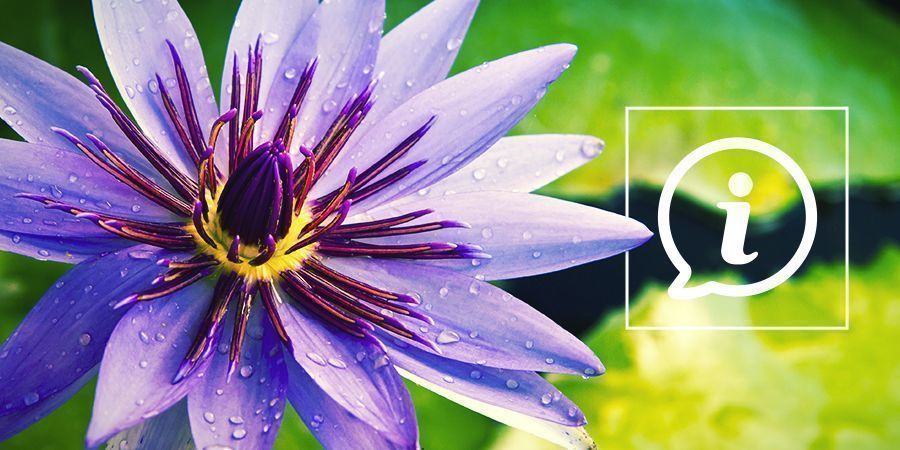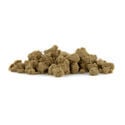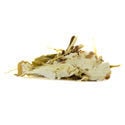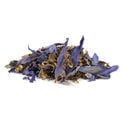What Is Blue Lotus?
The blue lotus also known as blue water lily was widely popular in ancient Egypt. Learn everything about the blue lotus and find out about its uses and effects.
The blue lotus (Nymphaea caerulea), also known as blue water lily, is a beautiful flower that originally comes from ancient Egypt, where it was cultivated along the river Nile. The plant had been of great spiritual and cultural importance for the ancient Egyptians, often appearing in artwork and acting as a symbol of certain deities. It was also associated with royalty, having also been found in King Tutankhamun's shrine. Along with that, it saw dual use as a recreational drug, cherished for its aphrodisiac and mild psychoactive effect. In fact, due to its popularity in ancient Egypt, some think of the blue lotus as the first “party drug”.
There's a lot more to this fascinating flower, however. We'll walk you through all the various uses we have for blue lotus to show you how much we have in common with the ancient Egyptians. We'll even show you how to grow and prepare it yourself!
History Of The Blue Lotus

The history of the blue lotus goes back all the way to ancient Egypt. There, more than 3000 years ago, the plant had been widely cultivated at the banks of the Nile for its beauty and intoxicating effects. Considered a sacred plant, closely linked with Egyptian deities like Osiris, Nefertem and Ra, blue lotus had also been used as a religious sacrament, along with being a component of a recreational “feel good” drug.
From Egypt, the plant made its way into the rest of the ancient world, from the Roman Empire to Britannia and Greece, even getting as far as India. In time however, as the ancient world faded into history, the blue lotus flower had been forgotten. This changed when findings by archaeologists in modern times re-ignited the interest in the sacred flower from the Nile. In the early 19th century, with ancient tombs being discovered and Pharaohs being unearthed from their eternal resting places, researchers wondered about the numerous depictions of the blue lotus in almost all the tombs. It became clear that the blue lotus had a deep importance, and the flower of the Nile once again had rose into the spotlight.
What Is Blue Lotus Good For?

Not much scientific research has been done in regards to the effects of the blue lotus, but we still have a good idea of where it can be useful.
• Aphrodisiac
Many people use blue lotus as a sort of aphrodisiac, although modern medicinal research hasn’t confirmed its usefulness in this aspect. Early research, however, suggests nuciferine, an alkaloid in the plant, may particularly help enhance sexual performance.
• Promotes a Good Night's Sleep
The blue lotus has also been long-used for its purported ability to help people get a good night’s sleep. Specifically, users say that it provides them with a relaxed sensation, and that resulting relaxation helps them get better sleep at night. We want to clarify, however, that the evidence here is purely anecdotal, as there have been no scientific studies performed to prove blue lotus actually has this effect, and determine exactly how it comes about.
• May Relax Muscles & Soothe Discomfort
Though not much scientific research on this subject has been performed it is believed that two of the main compounds in blue lotus, the alkaloids apomorphine and nuciferine may assist with muscle control.
• Lucid Dreaming
Blue lotus is among these plants that is said to help people to induce or enhance lucid dreams. No research on this particular use for the plant exist, but people report that tea made from the flowers consumed before bed time or using blue lotus in a vaporizer helps them enhance their dreams.
• Can Work as a Tension Reducer
While we only have anecdotal evidence to go off here, the flower has also been long-used by people when they are feeling tense and restless. They say that the plant produces a mild high similar to that from consuming cannabis. With this effect, the blue lotus can be good alternative for those with a low tolerance to THC.
• Mood Booster
One won’t find scientific proof on this particular effect of the blue lotus, but its popularity as an aphrodisiac since ancient times, along with the reported mildly relaxing effect, suggests that the plant may work as a natural mood booster. So, if someone you know is feeling down and low, the blue lotus may possibly be a good herbal supplement to suggest them.
Blue Lotus Chemistry

Chemical analysis of the blue lotus (Nymphaea caerulea) shows that the plant contains more than 20 different antioxidants including phenols, flavonoids, saponins, anthraquinones and anthocyanins. These are present in all parts of the plant, with the highest concentrations in the leaves and the flowers. Most importantly, the blue lotus contains the two alkaloids apomorphine and nuciferine.
Apomorphine has been described as a psychoactive alkaloid and non-selective dopamine agonist, meaning it can bring on happy feelings. It can also help with tension. Nuciferine is another plant alkaloid with similar effects, albeit non-psychoactive.
How To Use Blue Lotus
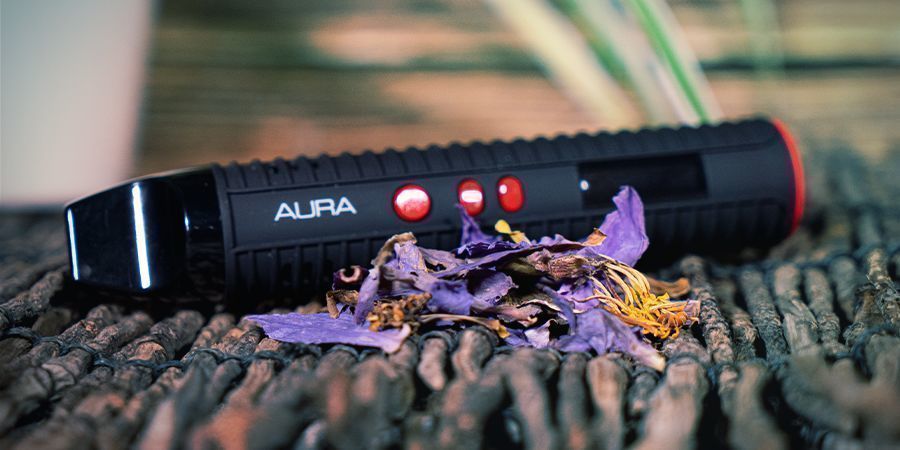
There are multiple ways one can enjoy blue lotus. Here are some of them:
-
Brew Blue Lotus Tea
Preparing blue lotus tea is very easy. If you have dried flowers, simply prepare your tea like you would do with normal herbal tea. For a mild dose, use about 5g of plant material. For a stronger dose, use 10g. Use a strainer and steep the flowers in hot water for 10-15 minutes. Drink while hot. If you want it even easier, you can also find ready-made blue lotus tea sold in bags.
-
Make Blue Lotus Wine
Many depictions in ancient tombs indicate that ancient Egyptians enjoyed their blue lotus by soaking it in wine. To make your own, simply put some leaves in wine and allow to soak for a few days. Since the blue lotus can introduce a bitter taste, this is best done with a sweet dessert wine such as a Lambrusco, Zinfandel or Riesling.
-
Vape Blue Lotus
If you own a vaporizer suitable for dry herbs, you can use it for blue lotus too. This is one of the more convenient ways to enjoy the flower, too; it only takes minutes to prepare, and you can take the vape with you anywhere. Just keep in mind that it has a fairly low vaping temperature (between 100 and 125 degrees Celsius (212-257º F). Finely grind dry blue lotus petals for the best vaping experience.
-
Start With Blue Lotus Flower Extract?
Blue lotus flower extract is perhaps the most efficient consumption method, containing the active compounds of the blue lotus in a highly concentrated form. These extracts are available in different strengths, such as 10x or 20x, and are available either in powder form, as tinctures, or as a pressed-down hashish-like resin. They all offer a convenient way to consume blue lotus, as they can all easily be added to foods and beverages, so it's up to your personal preference.
How To Grow Blue Lotus
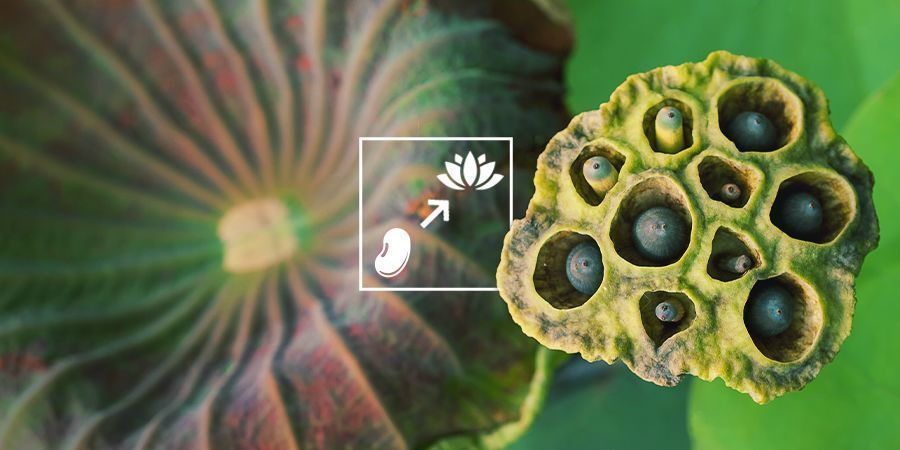
If you want to try it, you may be disappointed when you notice blue lotus isn't easy to come by. If you want your own personal supply, though, why not just grow it yourself? You won't need much to get started, and it isn’t particularly difficult.
What You Need
First, gather your most essential materials. Besides your gardening equipment, these materials are as follows:
- Loamy soil
- White sand
- Waterproof container
- Blue lotus seeds
The requirement of seeds is actually more of a recent addition than you'd think. Up until a few years ago, the traditional way to grow blue lotus was to grow the plant from the rhizomes, which are the underground parts of the plant. But this isn’t necessarily the easiest way to do things. Wanting to resolve this issue, horticulturists discovered a way how to grow the plant from seed. Growing blue lotus from seed isn’t just a lot easier, it is also less expensive.
Growing Blue Lotus: Step By Step Instructions
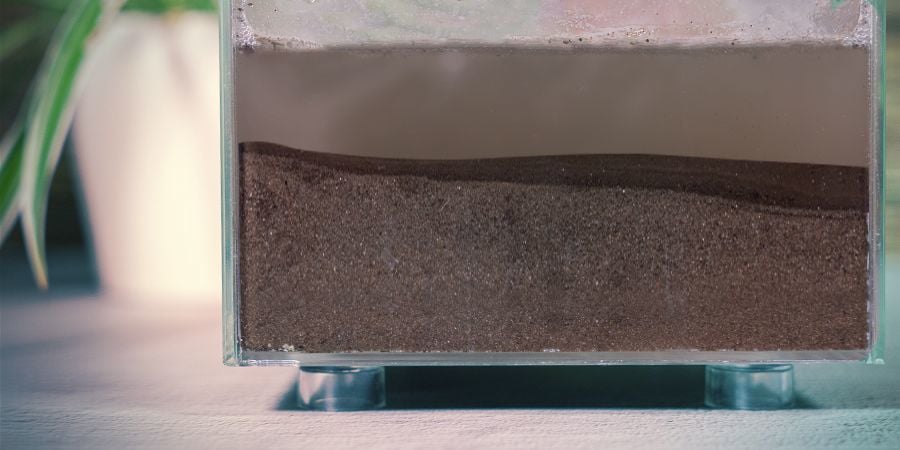
-
Get your waterproof container and fill with about 5cm of garden soil. Know that blue lotus wants a soil that contains sand, silt, and some clay. Make note that most “universal potting soils” for flowers likely won’t work. Avoid mixes that contain moss, wood, bark or other organic compounds, and don’t use any fertiliser. Now fill the container with warm water until it's about two fingers widths above the soil. Wait a few minutes for the soil to settle and then press on it to make it more compact.
-
Sow your blue lotus seeds evenly on top of the underwater soil bed, about 2–3cm apart from each other. After you placed the seeds, cover them with a thin layer of soil or sand.
-
Place the container with your seeds in a sunny and warm spot. The seeds will sprout after a few days. Right after sprouting, your blue lotus will look like grass. In a few days, the sprouts will develop two leaves that will float on the surface of the water.
-
Time for replanting! Once your blue lotus sprouts have grown a bit, you can replant them into a bigger container. Carefully remove them from the small container and plant them into bigger ones with more water.
Using The Whole Blue Lotus Plant
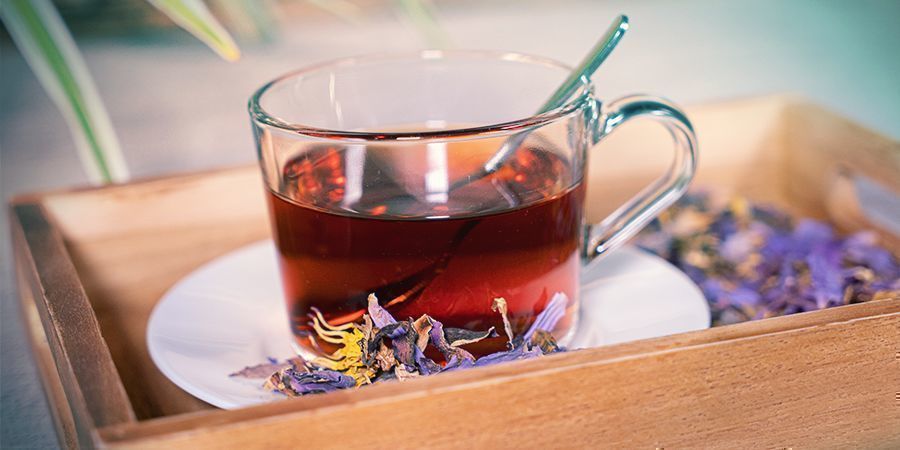
Sure, while certain parts of the plant are especially pretty, you can use the whole blue lotus to make food, tea, and even more blue lotus plants!
• Use Your Own Plants To Grow More Blue Lotus
When growing your own blue lotus, you can enjoy the added benefit of not needing to get more seeds if you want to grow more plants: As your plants grow, the flower head will move underwater where it will develop a fruit. When ripe, the fruit will contain the seeds. You can use these seeds to grow even more blue lotus!
• Blue Lotus Root
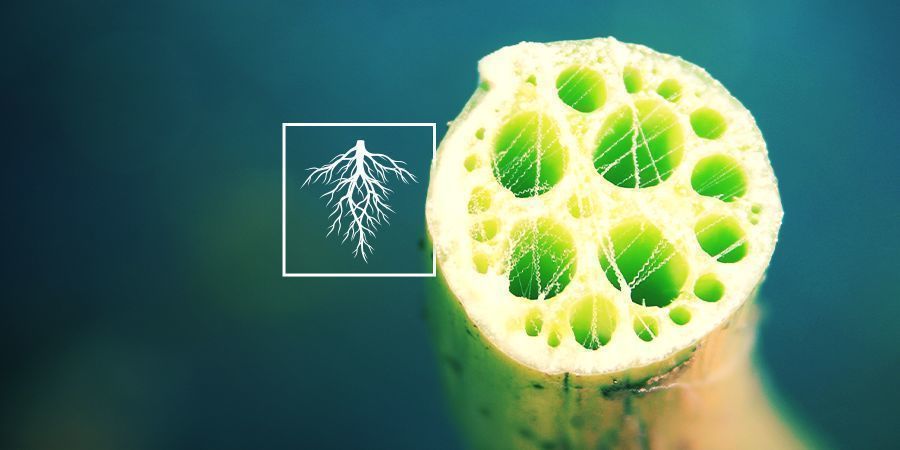
The underground part of the blue lotus is called rhizome. This is the “root” of the blue lotus, or, to be more precise, the plant’s subterranean plant stem or rootstalk. These can grow quite long and have multiple segments. What’s special about the blue lotus roots, though, is that they can be consumed as well. They're particularly popular as a delicacy throughout Asia.
Lotus roots are a good source of natural plant fibre, and are particularly rich in vitamins and minerals. They have a mild and sweet flavour, and a crunchy texture that can be compared to celery. When cooked for a long time, the root becomes a little softer. To cook the roots, the first thing you have to do is cut off the hard ends. Then, use a potato peeler and peel the thin outer skin. Rinse the roots well under water. Sometimes there may still be dirt stuck inside the holes, but you can easily remove it with a chopstick. After that, slice the roots into small “wheels”. You can now add the root slices to soups or stews, or stir-fry them to make healthy lotus root snack chips!
• How Do You Consume Lotus Seeds?
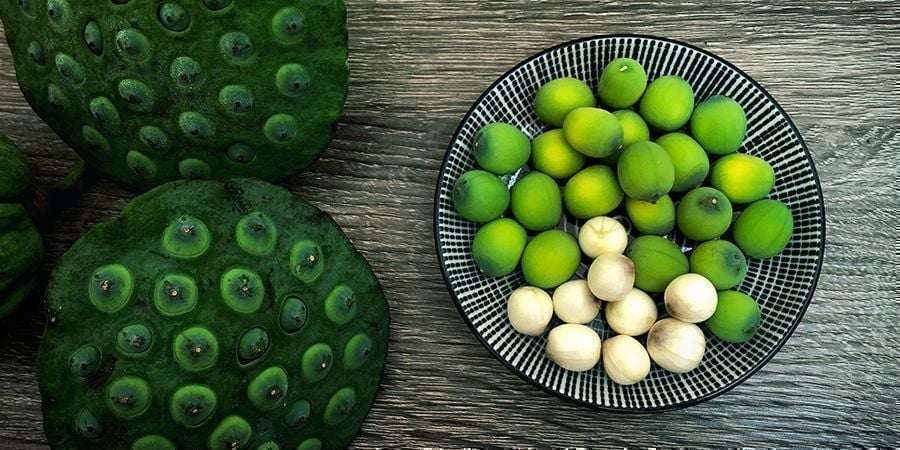
Along with the flower and roots, you can even consume the seeds of this beautiful flower. They are rich in vitamins (especially B vitamins) and minerals. There are brown and white lotus seed. Brown seeds are seeds with shell, usually harvested when the seed head of the lotus is ripe. White seeds are de-shelled lotus seeds which are harvested when the seed head is still green but already has fully-developed seeds.
To use dried lotus seeds, soak them in water overnight, just like you’d do with dried beans or lentils. Afterwards, you can add them to soups and many other kinds of foods! You can also enjoy lotus seeds in the form of a delicious paste. That preparation is especially popular in Asia, where it’s widely used in pastries and desserts.
Buying Blue Lotus
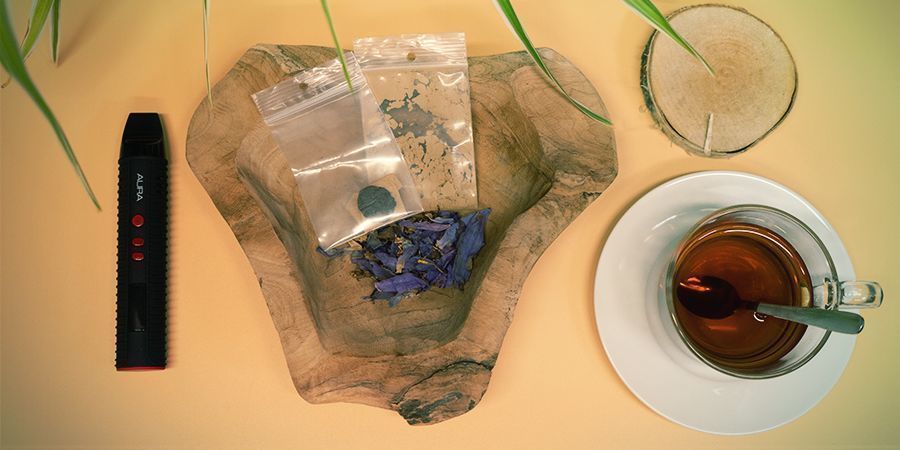
At Zamnesia we carry a range blue lotus products. Whether you’re looking for plant parts for making tasty teas, lotus flower extracts, resin or tinctures, we have you covered:
Blue Lotus Resin
A highly concentrated (20x) hash-like blue lotus resin! Form it into little balls to drink with water or use them to make a tea.
Blue Lotus Extract (20x)
Highly concentrated blue lotus extract (20x) in powder form. Very easy to add to beverages and great for making teas and to use for cooking.
Blue Lotus (Dried)
Dried blue lotus flowers are ideal for teas and for soaking in wine. Use 5g of flowers for a mild dose and 10g for a stronger brew.
Blue Lotus Tincture (15x)
Probably the most-convenient way to take blue lotus: Use 6-10 drops up to 2x per day of this highly concentrated blue lotus tincture.
Closely Related Plants
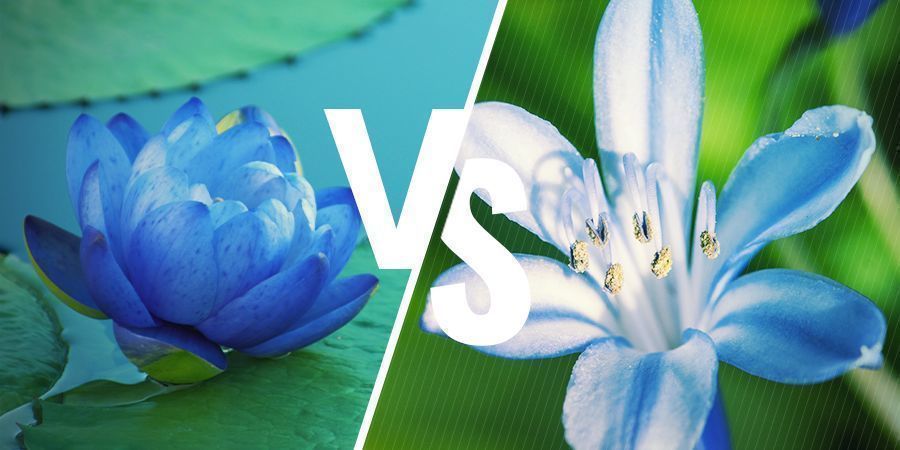
There is some confusion in regards to the difference between the blue lotus (Nymphaea caerulea) and the lotus (Nelumbo nucifera), the latter being the national flower of India and Vietnam. It doesn’t help that the names of these are often used incorrectly, so let’s clear things up.
What Is The Difference Between Blue Lotus And Blue Lily?
Nymphaea caerulea – This is the Egyptian “blue lotus” we are talking about in this post. It is also known as blue Egyptian lotus, blue water lily, blue Egyptian water lily, sacred blue lily or blue lily of the Nile. Despite its common name “blue lotus” it isn’t a lotus flower but a water lily in the genus Nymphaea.
Nelumbo nucifera – Also known as Indian lotus, sacred lotus, bean of India, Egyptian bean or simply lotus. This is an aquatic plant in the family Nelumbonaceae (water lotus). It doesn’t help that this plant is sometimes incorrectly called water lily.
So What's the Difference Between Water Lotus and Water Lilies? Both are different plants with different effects. On the other hand, the two have something in common: They both share one active chemical ingredient, the alkaloid nuciferine. In regards to consuming them, the Egyptian “blue lotus” Nymphaea caerulea is known to offer more pronounced effects. For that reason, Nymphaea caerulea is the plant that one should look into if they have a “psychonautic” interest in the blue lotus.
Other Members Of The Lotus Family
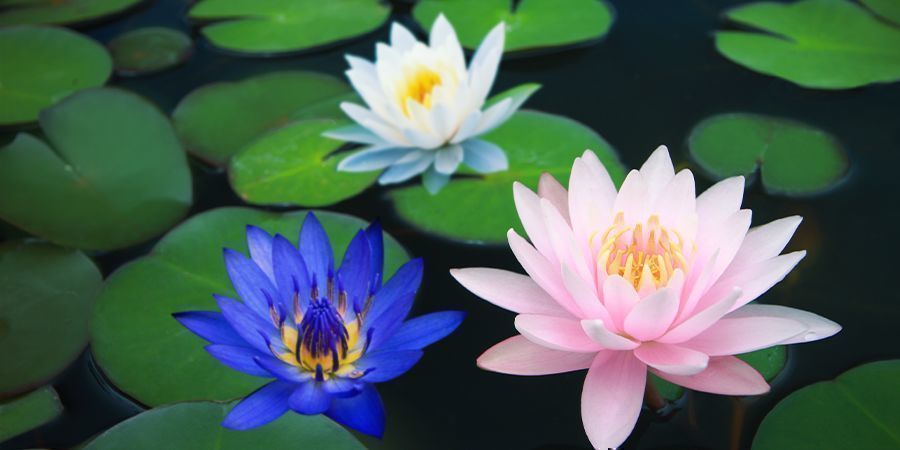
“Lotus” is the name commonly used for flowering aquatic plants like the Indian lotus (Nelumbo nucifera), but it is also used for various other plants and plant groups. Among them are the Nymphaeaceae ("water lilies"), like our Egyptian blue lily despite being quite different to Nelumbo. The Mesoamerican White Lily (Nymphaea ampla) belongs to this group as well, so does the red lotus (Nymphaea rubra).
• What Is Pink Lotus?
Pink lotus is another name for the Indian lotus (Sacred lotus) Nelumbo nucifera, formerly known as Nymphaea nelumbo. It is intimately linked with the Buddhist religion and is the national flower of India. The effects of the pink lotus are similar to the Egyptian blue lotus. It is also consumed in the same way, prepared as a tea or steeped in wine.
• What Is White Lotus?
The white lotus, also known as white Egyptian lotus, or tiger lotus, is a white flowering plant that like the Egyptian blue lotus belongs to the Nymphaeaceae (water lily) family. Aside from being white in colour, it shares many similarities with the blue lotus and also has similar effects.
Blue Lotus: Final Thoughts
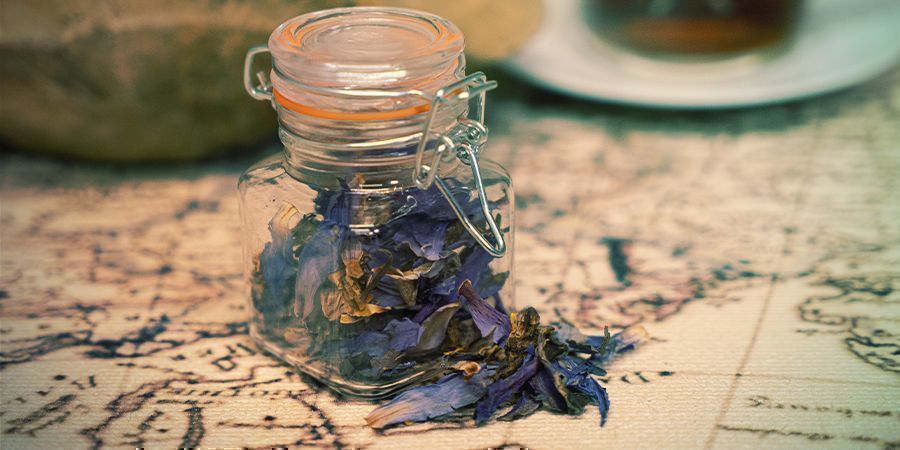
The ancient Egyptians didn’t consider the blue lotus a sacred plant of the Gods without good reasons. Though widely cultivated thousands of years ago, today the blue lotus is among the most endangered plants in the world. Only in recent times, with increased popularity of the plant, has the cultivation of the blue lotus seen a rise. With its magnificent beauty and the various beneficial effects, the blue lotus has become beloved amongst gardeners, herbalists and psychonauts.
Blue Lotus: Questions & Answers
- 💠 What is blue lotus good for?
- Blue lotus is widely used as an aphrodisiac, but it is also used for a good night's rest, to soothe muscles, reduce tension, boost mood, and to induce lucid dreams.
- 🤔 What is the difference between blue lotus and blue lily?
- Both are different plants with different effects. On the other hand, the two have something in common: They both share one active chemical ingredient, the alkaloid nuciferine.
- 🌱 How do you grow blue lotus?
- You can grow blue lotus from the rhizomes (the underground parts of the blue lotus plant) or from seeds. Growing from seeds is the easier method. You will need soil containing sand, silt, and clay, and a warm spot to place your container.
- 💰 Where to buy the blue lotus flower?
- You can buy blue lotus via our webshop. We have extract, dried flowers, tinctures, and resin in our smart shop section.
- ⚙️ What is lotus root?
- The subterranean plant stem or rootstalk, aka the rhizome, is also referred to as lotus root. Lotus root is rich in nutrients and a good source of dietary fibre. It can be used in numerous dishes, such as stews, soups, and stir-fries.
- 🌰 How do you consume lotus seeds?
- Just like you would with dried legumes, lotus seeds need to be soaked overnight before you can eat them.
- Agnihotri VK, Elsohly HN, Khan SI, Smillie TJ, Khan IA, & Walker LA. (2008 Jul). Antioxidant constituents of Nymphaea caerulea flowers - PubMed - https://pubmed.ncbi.nlm.nih.gov
Blue Lily
You might also like









 United States
United States
